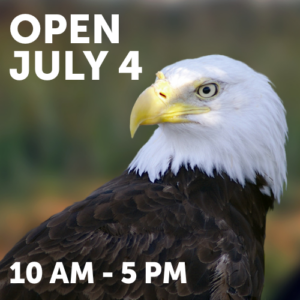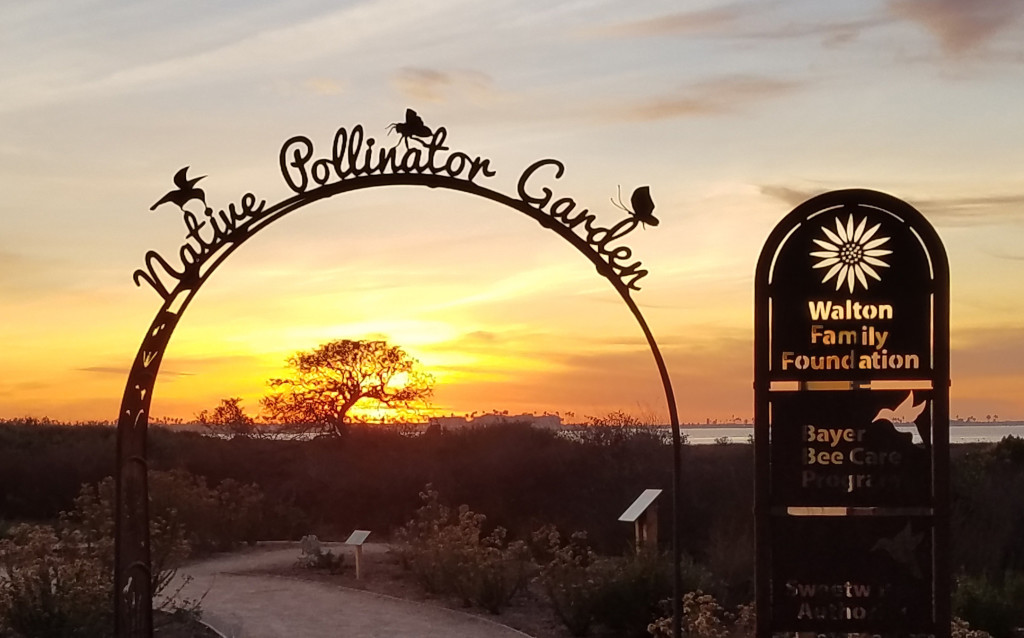 Written by Horticulturist Paul Hormick; Bee photos by Intern Jocelyn
Written by Horticulturist Paul Hormick; Bee photos by Intern Jocelyn
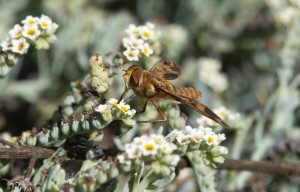 With the winter rains and cooler temperatures, the flowers of our Native Pollinator Garden, as well as the rest of our landscaping, will soon be showing off their blooms of yellow, blue, and magenta. We hope that the flowers and aromas inspire you to plant a native pollinator garden of your own.
With the winter rains and cooler temperatures, the flowers of our Native Pollinator Garden, as well as the rest of our landscaping, will soon be showing off their blooms of yellow, blue, and magenta. We hope that the flowers and aromas inspire you to plant a native pollinator garden of your own.
The rains and cool temperatures also make this time of year a perfect opportunity to plant a pollinator garden. A garden can be any size, from a few plants along your house to your entire backyard. Before you start digging, keep these pollinator points in mind:
- Use plants native to your area. The pollinators in your
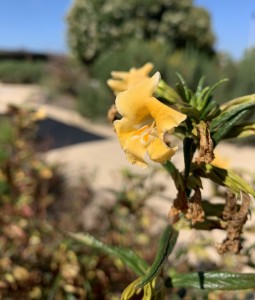 neighborhood are adapted to pollinating and living with native plants. Your local chapter of the California Native Plant Society (CNPS) has more information.
neighborhood are adapted to pollinating and living with native plants. Your local chapter of the California Native Plant Society (CNPS) has more information.
- Plant a variety of plants that bloom at different times of the year. This way, the butterflies and bees have something to eat all year long.
- Help pollinators find their food by clustering plants in groups. They will have an easier time pollinating if they can go easily from one sage to the next or one sunflower to the next.
- Include plants that the pollinators’ larvae feed on
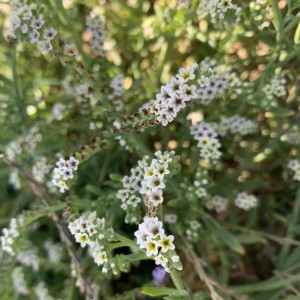 as well. You can find out more about this through your local chapter of CNPS or the Xerces Society.
as well. You can find out more about this through your local chapter of CNPS or the Xerces Society.
- Don’t use pesticides. Besides killing pests, pesticides kill pollinators, too. Most plants native to southern California have good defenses against pests and don’t need help from pesticides. If you do wind up with an infestation of aphids or whitefly, try targeted pruning or releasing ladybugs, which you can get from your local garden supply store.
- Most bees native to southern California nest in
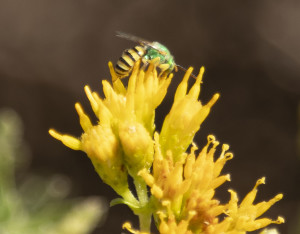 the ground. Be sure to leave some areas of bare ground without mulch for the bees to make their nests. They also like old pieces of wood and logs.
the ground. Be sure to leave some areas of bare ground without mulch for the bees to make their nests. They also like old pieces of wood and logs.
- Pollinators need water. Include a freshwater source. It can be small, like a dish or bowl, a birdbath, or a full-blown water feature or fountain.
- Leave apple cores, banana peels or other fruit or vegetable scraps for butterflies. They feed on these as well as flowers.
On your next visit, come visit our Native Pollinator Garden for inspiration and please share with us any experiences or insights that you’ve had with native bees, butterflies, or the native plants on which they depend.
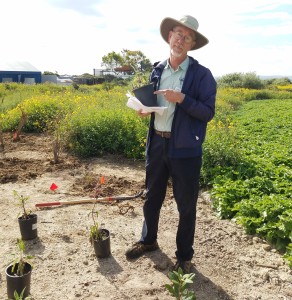
Paul Hormick has worked at the Living Coast for 5 years. Although he’s responsible for much of our landscaping, Paul is passionate about all of wildlife and became interested in plants through his love of birds.
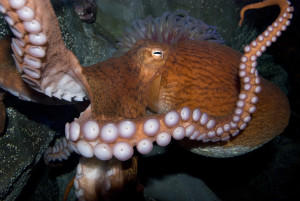
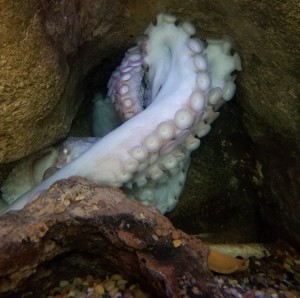 Pacific octopuses have over 2,000 suckers! Each sucker works independently to taste, smell, and grasp. And their suction is strong enough to leave hickeys!
Pacific octopuses have over 2,000 suckers! Each sucker works independently to taste, smell, and grasp. And their suction is strong enough to leave hickeys!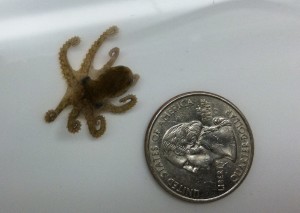 ocean creatures, including crustaceans, fish, and other mollusks.
ocean creatures, including crustaceans, fish, and other mollusks.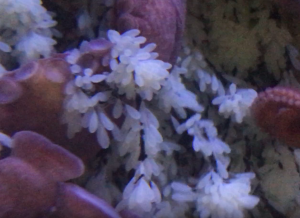 The end of their life cycle begins after breeding. The male dies within a few months of mating and the female dies shortly after her eggs hatch. When the female lays her 20,000-100,000 eggs (pictured), she will spend the rest of her life protecting them and will stop eating. It can take months before she passes on and her young fend for themselves.
The end of their life cycle begins after breeding. The male dies within a few months of mating and the female dies shortly after her eggs hatch. When the female lays her 20,000-100,000 eggs (pictured), she will spend the rest of her life protecting them and will stop eating. It can take months before she passes on and her young fend for themselves. 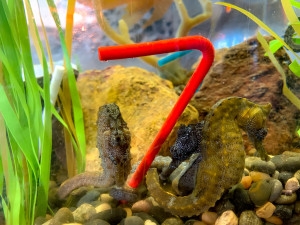
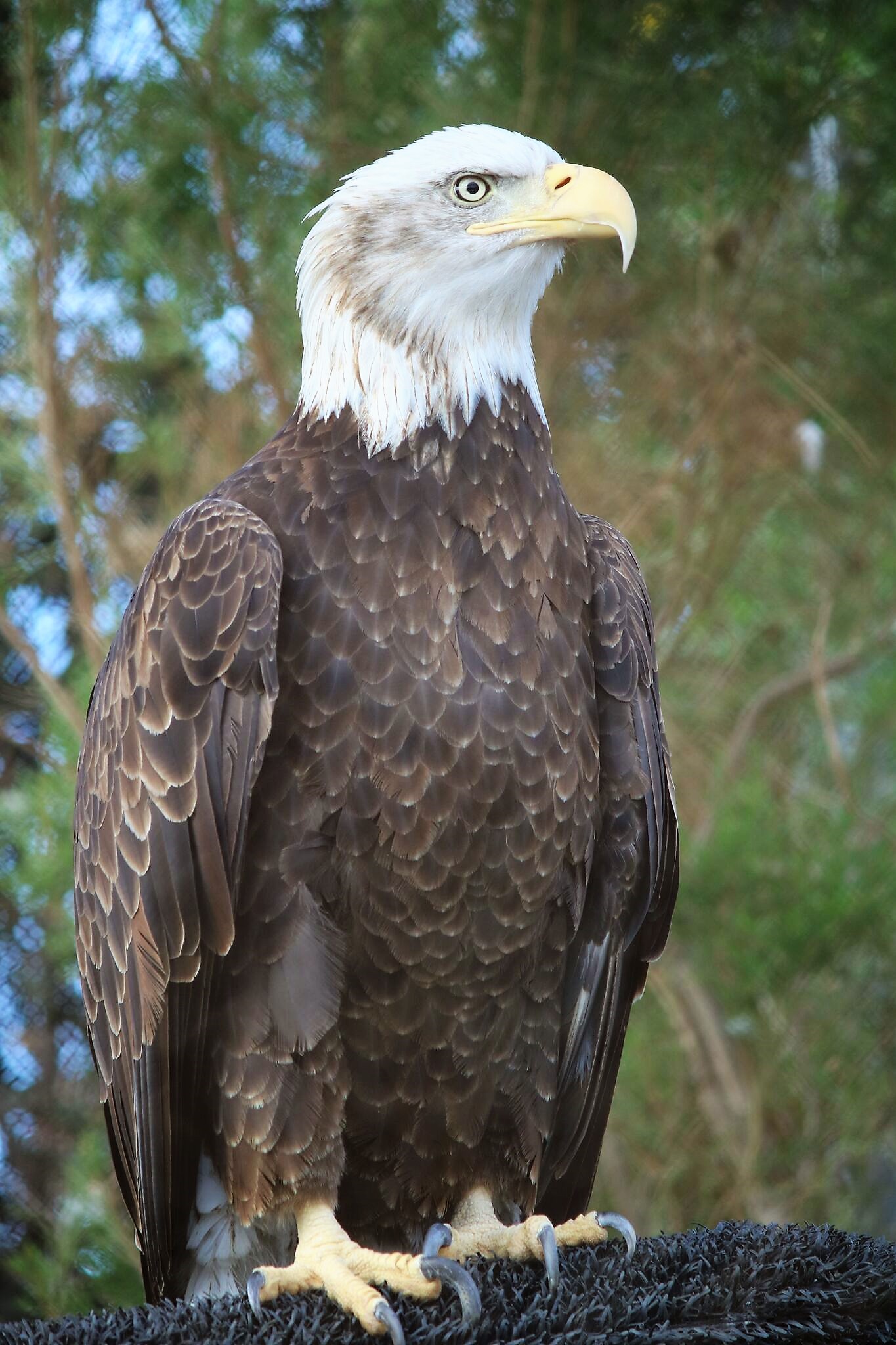 We all are familiar with bald eagles, but have you ever wondered where the name came from? You might guess that its white head makes it look bald, but that’s not it! There is an old English word, “balde” which means white. We get the word “piebald” from this as well. Piebald means a mix of dark and white coloration, so it is easy to see why eagles would get a name relating to this word. So the name “bald eagle” originated from the old English word “balde”.
We all are familiar with bald eagles, but have you ever wondered where the name came from? You might guess that its white head makes it look bald, but that’s not it! There is an old English word, “balde” which means white. We get the word “piebald” from this as well. Piebald means a mix of dark and white coloration, so it is easy to see why eagles would get a name relating to this word. So the name “bald eagle” originated from the old English word “balde”.